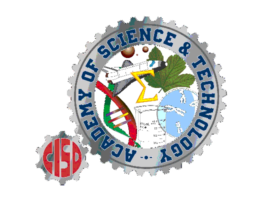Internship
Introduction
The internship program involves pairing an Academy student with a mentor scientist, technician, engineer, medical or health practitioner, or other professional. The internship can be local, in another city, state, or country. The goal is to provide the student with real-world experience in an area of his or her own professional interest. The internship may be a paid or unpaid position, depending on the site.
The internship is designed as a one-half credit course (local) and is required for graduation from the Academy. Student expectations are high and the prospective mentor may look forward to working with a young woman or man who is hard-working, enthusiastic, cooperative, punctual, and dependable- a productive learner in the role of student apprentice.
Internship Eligibility and Information For Mentors
An Academy student who has completed 14.0 exploration credits is eligible to do an internship. The experience is designed for students between the junior and senior year since they have taken the necessary coursework to be a viable worker, have the maturity to handle the work force, and are able to get to the work site. Students seeking internship prior to that time must do self-placement if they have met the exploration credit requirement.
Prior to becoming eligible for an internship, an AST student has completed 14 exploration credits. Exploration credits allow students to explore things they might be interested in studying after high school, such as biology (through trips to the natural science museum, zoo, hospitals), engineering (through trips to engineering firms, robotics competitions, etc), computer science (through online programming experiences, app development opportunities, etc). You can read much more about AST and our requirements by viewing our senior profile here.
Students may seek out their own internship opportunity after researching your company/organization. You may have applicants for internships from students who are friends with your former interns, or these students may be placed by EFTA through their summer internship program.
We encourage flexible scheduling to accommodate the needs of both the intern and mentor. For example, during the school year, the intern might work 2.5 hours per day twice a week for 16 weeks or 2.0 hours per day three times a week for 14 weeks. During the summer, the student might work 16 hours per week for five weeks, or 40 hours per week for two weeks.
We suggest that the mentor interview the prospective intern as if considering hiring him/her. An intern should meet expectations in terms of preparation and enthusiasm. More than one intern candidate may be interviewed before a decision is made.
The mentor should give the intern one or more specific assignments. Goals for the internship should be negotiated and set.
We ask that the mentor conduct an initial evaluation of the intern after approximately 20 hours of work and a final evaluation at the end of the internship period. Forms for this purpose are provided by the student.
